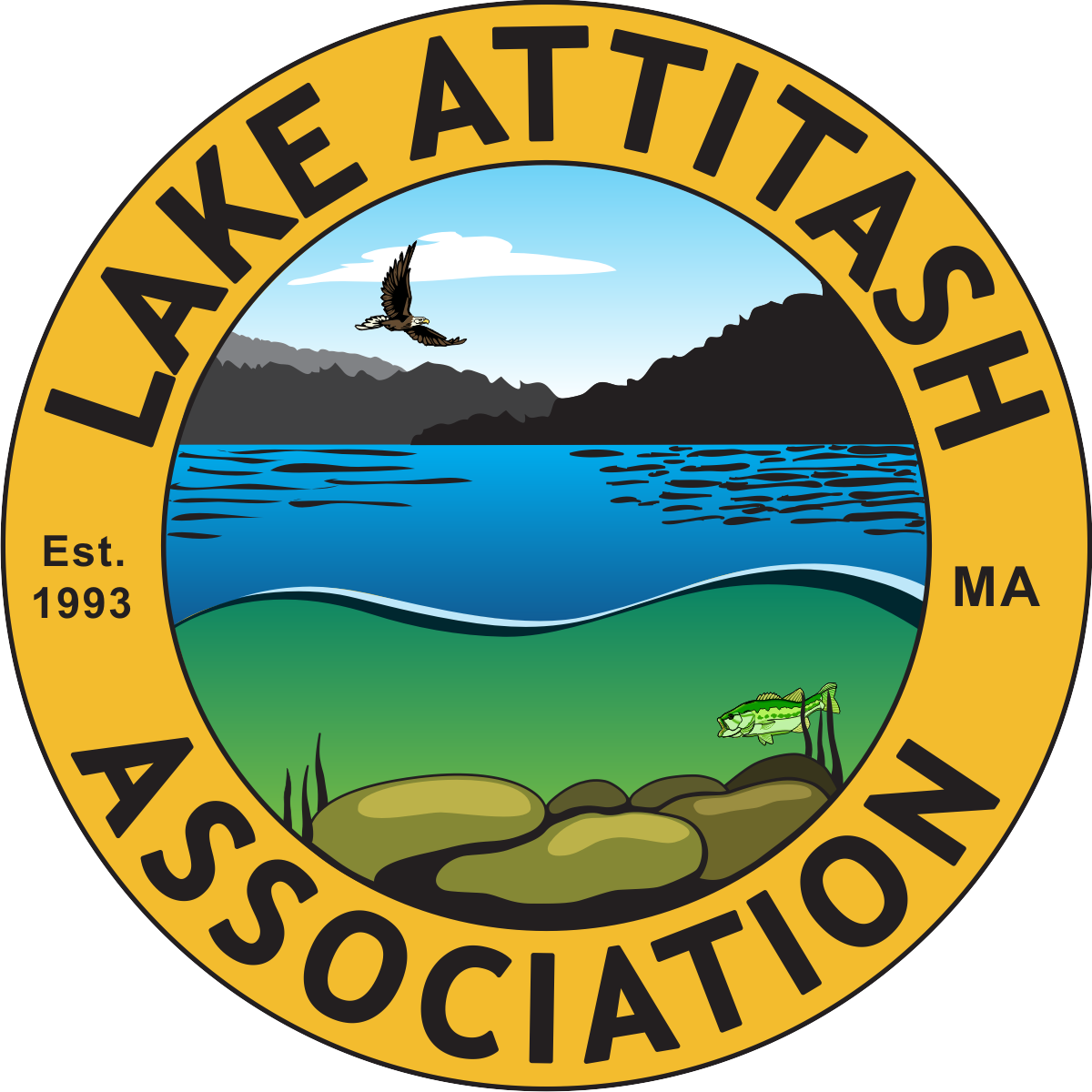Alum Treatment Is Scheduled
Dear Friends of Lake Attitash,
After all this time, the Lake Attitash Alum Treatment is happening this month!
Crystal clear water is coming soon!

| It has been a long journey so here is a refresher for those who are new to the lake. December 2015 – The LAA took its first steps towards obtaining an s.319 grant from the Massachusetts Department of Environmental Protection (DEP) in December of 2015. We knew we had to do something about the recurring cyanobacteria blooms in the lake. It was well known that these blooms are a threat to human and animal health. Thanks to years of research followed by the expert testing and consulting services of Dr. Kenneth Wagner, LAA knew what needed to be done and what the potential options were. In the end, the only option that DEP would consider funding was an alum treatment. Fortunately for us, the reason they would consider funding an in-lake treatment at this time was because over the past decades, through other grants, LAA, Amesbury and Merrimac had done everything that could reasonably be done prevent nutrients from entering the lake by installing main sewer lines and managing the main storm water run-off problems all around the lake. Giving the lake a one-time alum treatment as prescribed by Dr. Wagner was going to cost approximately $600,000. Raising the required 40% match money (approximately $240,000) became a major project that was all consuming for the next two years. The LAA raised $50,000 from its members (amazing!) and worked to obtain the support of Amesbury and Merrimac who contributed the remaining funds. We could not have applied for this grant without the commitment and generosity of the city of Amesbury, town of Merrimac and the support of Representatives Kelcourse and Mirra. March 2017 – Rob Desmarais, DPW Director for Amesbury worked with the LAA and Ken Wagner and submitted the grant proposal in March 2017. He wrote a winning proposal! December 2017 – the LAA and Amesbury learned that the Department of Environmental Protection had awarded close to $360,000 for an alum treatment in Lake Attitash. With the match money we had set aside we had the $600,000 needed for the alum treatment. December 2018 – Amesbury put out the bids for lake management companies to apply the alum. January 2019 – Amesbury awarded the contract to Solitude Lake Management Services, the same company that has been conducting the annual weed management services for the LAA since 2012. 2019 – Amesbury sought and obtained the necessary permits to conduct the alum treatment. |
| This alum treatment is our reward for diligent, long term planning and effort and the support and wisdom of local leaders and the Department of Environmental Protection. |

What is next?
- Solitude and Amesbury have scheduled the start of the alum treatment for April 22. They expect the treatment to be completed in about 6 days. Assembling the required equipment and storage tanks at the State boat ramp off Route 110 will likely take a week prior to the treatment. Removing the equipment will take 2-3 days after the treatment has been completed. Weather can impact the timing and completion of the project.
- The alum will be applied in the deepest sections of the lake, at depths of 11.5’ or more. Approximately 195 acres of this 365 acre lake will be treated. Dr. Wagner’s testing showed that the primary source of the nutrients that feed the cyanobacteria is in the sediment. Phosphorus has accumulated there for decades. His research also showed that and that deepest levels of sediment are in the deepest parts of the lake.
- The alum will be applied from a boat that will be launched from the State Boat Ramp.
- The Amesbury Conservation Commission has ordered restrictions on boating on the lake starting one day before the treatment and continuing until 2 days after the treatment has been completed. These restrictions will be posted around the lake by the Amesbury DPW.
We want to do everything we can to prolong the effectiveness of this treatment. Its benefits are expected to last over 15 years but the more we can do to prevent nutrients from entering the lake through soil erosion and unfiltered storm water run-off the healthier our lake will be. Remember our New Year’s resolutions??
| Go Wild! Put your lawn on a diet! No fertilizer … or follow the law and only apply what your soil test prescribes. |

| Pick up the Poop! |

| Storm water running over your property? – put in a buffer garden to absorb the storm water and the nutrients. |

| Stop shore line erosion and storm water gullies – plant low bushes, grasses and perennials along your shoreline. |

| Clean up your shoreline – do what you can to stop additional nutrients from decaying leaves and lake weeds from reentering the lake. |

| Keep your compost area at least 25’ away from the lake edge. |

| Pay attention to storm drains and retention basins near you and report any need for maintenance. |

| Slow down your boat! Drive slowly in shallow areas so as not to disturb the sediment and release those nutrients! |

| This project has been partially funded with Federal Funds from the Environmental Protection Agency (EPA) to the Massachusetts Department of Environmental Protection under an s. 319 competitive grant. |
